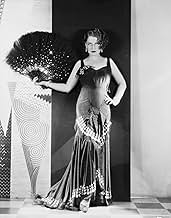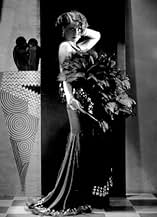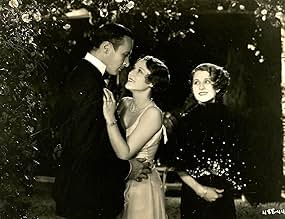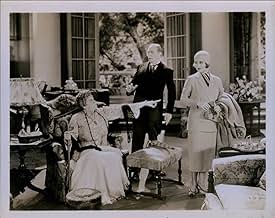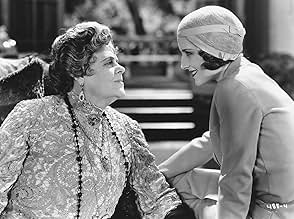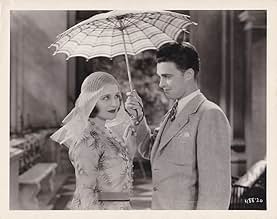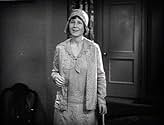Ajouter une intrigue dans votre langueA housewife divorces her self-centered husband. Years later, she attends a party where her ex is pursuing another woman. Unbeknownst to him, she is the same ex-wife he'd neglected, now trans... Tout lireA housewife divorces her self-centered husband. Years later, she attends a party where her ex is pursuing another woman. Unbeknownst to him, she is the same ex-wife he'd neglected, now transformed into a fashionable socialite.A housewife divorces her self-centered husband. Years later, she attends a party where her ex is pursuing another woman. Unbeknownst to him, she is the same ex-wife he'd neglected, now transformed into a fashionable socialite.
- Réalisation
- Scénario
- Casting principal
- Récompenses
- 1 victoire au total
- Bob Brown
- (as Rod LaRocque)
- Wallace
- (as Tyrrell Davis)
- Struthers
- (as William O'Brien)
- Bobby Brown - 8 Years Old
- (non crédité)
- Mrs. McIntyre
- (non crédité)
- The Brown's Little Girl
- (non crédité)
- Helen Hibbard
- (non crédité)
- Bobby Brown - 5 Years Old
- (non crédité)
Avis à la une
LET US BE GAY is an interesting little domestic comedy which features some tart dialogue (courtesy of celebrated screenwriter Frances Marion) & good performances. While perhaps a bit mawkish at times, this can probably be blamed on the difficulties with early sound technology which tended to limit action & movement.
Norma Shearer can be credited with appearing in this minor film, rather than using her undoubted clout as Irving Thalberg's spouse to insist upon only A-grade pictures. She is especially effective in her first few scenes, where dowdy flat makeup makes her almost unrecognizable. Her extreme transmogrification from goose to swan could only happen in Hollywood, but it's scarcely profitable to spend much time worrying about that.
Rod LaRocque doesn't come off too well as Shearer's adulterous husband. Quite popular during Silent days, the talkies were not especially kind to him and his career would suffer. Here his role is not in the least sympathetic and one has to wonder what masochistic impulse moves women to desire the cad so much.
Magnificent Marie Dressler is on hand as an eccentric Long Island dowager. As a great friend of Frances Marion, one can easily imagine that the part was written expressly for her. Full of cranks & crotchets, she is very humorous. However, the tremendous warmth & essential goodness which would very shortly make her Hollywood's biggest star are largely missing.
Among the supporting cast, Hedda Hopper scores as a slinky society serpent, as does Wilfred Noy playing a comic butler. Movie mavens will spot little Dickie Moore as Shearer's young son & elderly Mary Gordon as her housekeeper, both uncredited.
Marie Dressler is a rich society lady and she has invited a new and improved Norma to come to her house for the weekend--ostensibly to help Marie break up a budding romance between her daughter and La Rocque! Apparently, Norma is now a super-vamp and with her magical sex appeal, she can break up the romance--and no one seems to realize that she and La Rocque were married. Several others are there for the weekend and immediately Norma is a hit with her gay, carefree sexy ways--and almost all the men (including La Rocque) are captivated by her. Neither tells anyone that they were married but it's obvious that her ex- wants the new and improved Norma back! This film is a sophisticated comedy of manners among the upper-crust--similar in some ways to Jean Renoir's THE RULES OF THE GAME. Oddly, despite the severity of the Depression, such films about pretty rich folks were pretty popular though many today will doubtless find them a bit too droll in spots. However, fortunately, in LET US BE GAY, there are plenty of cute and funny moments (particularly towards the end when Marie Dressler shows her true colors). While not a great film, it certainly is a good one and more than just another time-passer. My only real regret is that I didn't love the very end. You'll just have to see it for yourself--perhaps you'll agree about the ending, perhaps you won't, but I'm pretty sure you will enjoy this clever film.
Surprisingly, once you get used to its theatrical style - necessary for this type of comedy, you might enjoy this. I didn't think I would but despite my initial reservations (were I around then, I'd have been watching Cagney at the Warner Brothers cinemas), I actually found myself laughing at this.
If someone asked you what 1930s movies were like, this type of picture would definitely not be what you'd think about. Today such gentle, gentile plays would play to empty houses but if you put yourself into the mindset of a 1929 theatre goer, you'll find this quite amusing: it's not what these days you'd call funny but it's not without some charm.
Like all of her films, this is another excuse for Irving Thalberg to say to the world: Have I got a hot wife or what! Inexplicably although Miss Shearer is no classic beauty, she somehow exudes 1.21 Gigawatts of sexuality. Don't know how she does it....maybe it's because she was such a good actress!
In this picture, Mrs T after divorcing her unfaithful husband reinvents herself as the most brazen, sex-hungry man eater you've ever seen outside of a Carry On film. The rest of the cast are the usual stock characters for this type of thing but it's made so well (ok, it's a bit creaky because it was made in 1930) it's a cut above the usual. As long as you know what you're going to get: the acting isn't meant to be naturalistic, it's in the style of a farce - it's actually quite entertaining.
Le saviez-vous
- AnecdotesAt the time of its release, this film features the next two actresses to win Best Actress at the Academy Awards, Norma Shearer would win at the ceremony later that year for La divorcée (1930), and Marie Dressler the year after for Min and Bill (1930).
- GaffesNear the end of the film, just after the children depart with Boucci and their nurse, a shadow of the boom microphone falls across a column to the right of the scene.
- Citations
Mrs. Katherine Brown: For Heaven's sake, let's be gay about this!
- ConnexionsAlternate-language version of Soyons gais (1930)
- Bandes originalesOh Where Oh Where Has My Little Dog Gone
(1864) (uncredited)
Written by Septimus Winner
Sung a cappella by Rod La Rocque with modified lyrics
Meilleurs choix
- How long is Let Us Be Gay?Alimenté par Alexa
Détails
- Date de sortie
- Pays d’origine
- Langue
- Aussi connu sous le nom de
- Let Us Be Gay
- Lieux de tournage
- Société de production
- Voir plus de crédits d'entreprise sur IMDbPro
- Durée1 heure 19 minutes
- Couleur

